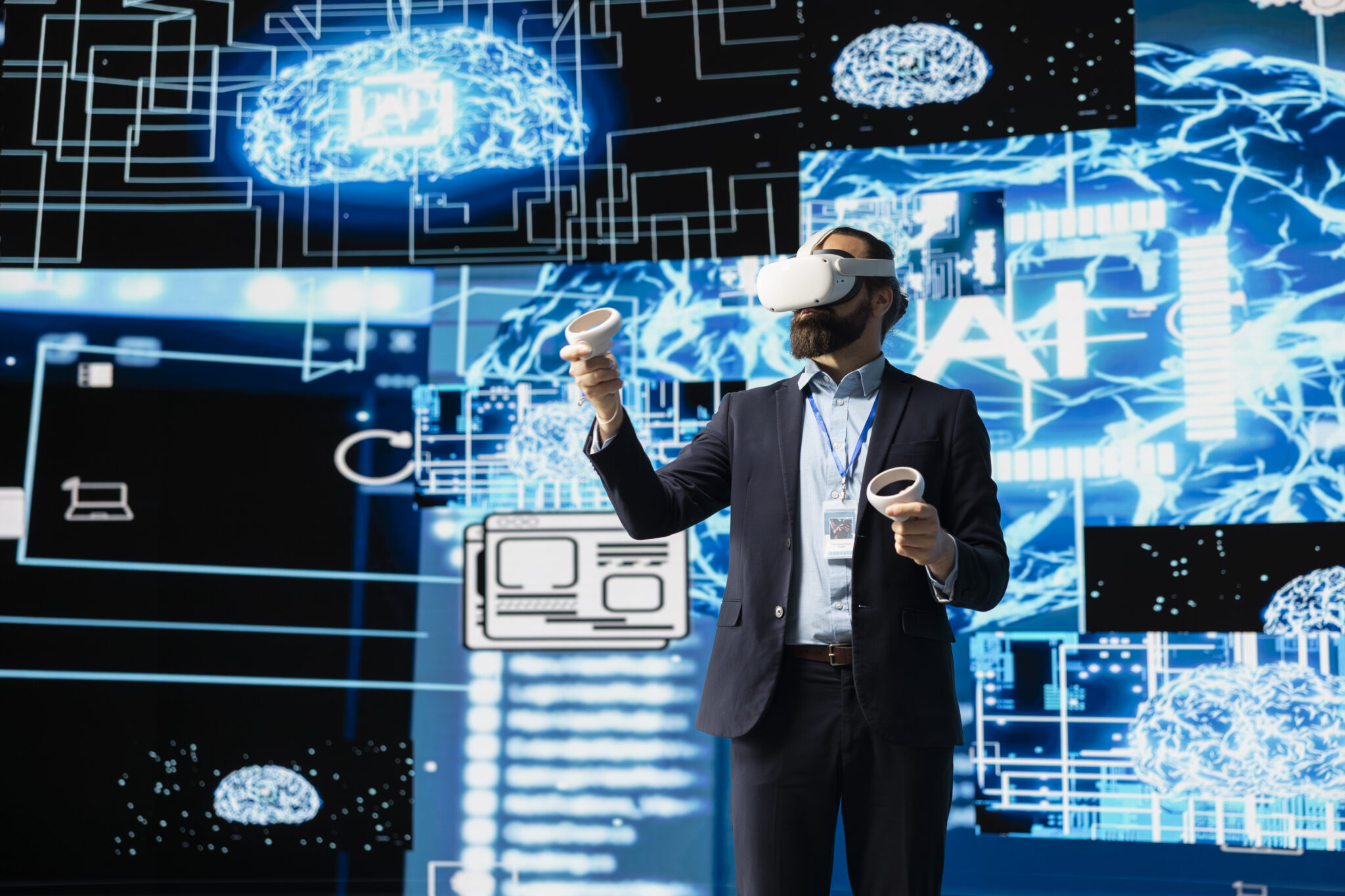Artificial Intelligence (AI) is not some remote vision but present in our everyday applications. Be it voice assistants in phones or the movie recommendation app, AI is silently but surely changing the way of our survival, work, and connections. By 2025, AI will be smarter, more user-centric, and readily embedded in homes, schools, hospitals, and businesses. This easy-to-follow beginner’s guide clarifies what AI really is, its history, how it works, and why it matters at the moment. We break it down into plain English with numbered points for your ease.
What Is Artificial Intelligence?
Human beings began to create intellectual machines through the technology of artificial intelligence, which includes learning, reasoning, problem-solving, speech recognition and planning. Unlike current machines, traditional computers only give their best according to instructions and cannot make a single decision. They strictly follow instructions fed into them by the user.
AI is all around us in our virtual assistants, in helping doctors analyze medical scans, in recommendations for products online; in a nutshell: it saves time, increases efficiency, and solves problems, period. According to a Deloitte study in 2023, most of the businesses who use AI are just trying to be smarter: the largest wins are in productivity and efficiency, although cost cutting and a boost in sales are still catching up.
A Brief History of AI
All the technology has a beginning since the 1940s and 1950s as far as AI technology is concerned. Here it is in a nutshell:
- 1940s-1950s: The Beginning Scientists began creating the groundwork with concepts like artificial neural networks. Turing posed that question in 1950: “Can machines think?” And his test for machine intelligence became one of the seminal measures of machine intelligence. The Term ‘AI’ was Coined at the Dartmouth Conference, 1956
- 1960s-1980s: Ups and Downs Content that was being created through such AI algorithms generally created a huge hype riding on over their shoulders claiming to revolutionize circumstances, leaving those investments to face a bad fate much similar to the one faced in the “AI Winter.”’ There were good implementations with expert systems in the 1980s. Unfortunately, such implementations simply could not scale up.
- 1990s-2000s: Rising from the Ashes It was only when computers were much faster and more data became accessible, artificial intelligence regained power. It gave way to machine learning – allowing systems to learn from experience. An example includes banks that are using AI for detecting fraud and companies that are into logistics for route optimization.
- 2010s to Present: The Deep Learning Tsunami Recently, in 2012, the AlexNet AI model won the major image recognition contest showing deep learning’s muscle. This resulted in leaps in speech recognition, facial detection, and more. By 2025, it’s going to be transforming industries such as healthcare and transportation.
AI vs. Human Intelligence
AI is always being compared with the human brain, but they are different. Approximately 53% of Americans believe that AI operates like a human brain, but it does not. Here they are:
- Speed: The processing of AI is almost instant for even image analysis on massive data. Humans are slower but better in situations that are uncertain or have emotions.
- Learning: AI learns through data sets, while the human learns through experiences and emotions. Humans are much better at learning and adapting in novel situations.
- Creativity: It may be a way of coming out with patterns for text or art, but it does not portray the emotional depth of human creativity.
- Decision-Making: The former is based on reason and facts, the latter on emotions and values in dealing with complex scenarios.
- Emotions: The one can pretend to have emotional reactions, but it doesn’t really experience such. It’s human beings that are great with empathy and relations.
Data is handled by AI, and judgment as well as ethics are supplied by humans.
How Does AI Function?
AI replicates human reasoning through the use of data and mathematics. Here’s the process broken down into simple steps:
- Get Data: AI begins with data, such as text or images or user actions. This data goes through cleaning and organization.
- Select an Algorithm: Choose neural networks for images, select decision trees for simple tasks, etc.
- Train the Model: AI will find patterns, using techniques that may be supervised learning (labeled data), or unsupervised learning (identifying hidden structures).
- Test & Validate: It must be tested with new data to be sure it is working in reality.
- Implementation and Monitoring: Continuous testing for AI accuracy and bias post-integration of AI-based products such as chatbots.
- Adaptation: Some AI approaches benefit from getting updated with new data, although this has to be appropriately managed in order not to become vulnerable to error.
Ethical Concerns of AI
AI brings about immense benefits but also poses certain challenges. Around 82% of Americans are concerned about the ethical risks associated with it, and 86% believe that there should be regulations. Some of the major concerns include:
- Bias: A reflection and amplification of bias that exists within the training data for unfair outcomes.
- Privacy: Personal data is often scraped by the AI, thereby placing individuals under surveillance concerns.
- Transparency: It should be clear to the users on what grounds AI made decisions.
- Accountability: Who is to be held responsible if ever the AI system lapses in a vital context just like health?
- Environment: Energy consumption during the training of AI models is very high; hence, sustainable practices are essential.
Acts such as the AI Act and GDPR in the European Union work to guarantee secure and rightful use of artificial intelligence.
AI in Layman’s Terms
Believe it or not, you use artificial intelligence every day:
- Voice assistants: Siri or Alexa respond to commands and answer questions.
- Recommendations: Netflix and Amazon will recommend shows or products based on your behavior.
- Social Media: AI will curate your feed and decide what content you see, and will filter out harmful posts.
- Navigation: Google Maps now finds the best routes using AI.
- Security: AI finds spam emails or credit card fraud
AI in Design & Technology
AI is changing how we make:
- Web Design: We now have Wix ADI that can build a website from just answering a few simple questions; all in barely any time at all
- UX: AI customizes apps and anticipates user behavior to enhance designs.
- Accessibility: AI goes through websites to spot things like lack of description of images, so that everyone can use them.
- Graphic Design: It generates images from text like DALL·E, which accelerates creative work.
- Branding: Logos and campaigns look consistent and appealing with AI.
Jobs That AI Can’t Replace
Although AI may automate tasks, there are jobs that require human skills:
- Healthcare: Empathy and ethical judgment by doctors and nurses.
- Creatives: Unique imagination brought by artists and writers.
- Teachers: Emotional needs of students.
- Skilled Trades: Plumbing and electrical tasks that are unpredictable.
- Leaders: Ethical long-term decisions.
Starting with AI
Anyone can use AI today and start with writing tools like ChatGPT, images such as MidJourney. Many of them have free versions that one can try. To learn more:
- Take online course at Coursera
- Read blogs from OpenAI or Google AI.
- Hear podcasts like the Lex Fridman Podcast to learn.
- Try some basic AI tools to understand what is happening.
Conclusion
In 2025, AI is such an incredible force that it is transforming our world by performing tasks that are easy and boosting creativity and solving complex problems. But it has also made us think about fairness and responsibility. With the knowledge of the basics, history, and applications of AI, one will be able to handle it wisely for work, creativity, or in everyday life scenarios. Begin with small steps, stay curious, and explore how AI can enhance your life.






















